The 12 Universal laws of life
There are various interpretations and formulations of the “universal laws of life” depending on the source and perspective. The 12 universal laws of life, often associated with spiritual or metaphysical teachings, may leave you feeling unbalanced when you encounter obstacles through lack of connection to the laws in general. Additionally, it is possible to live a life of awareness’s relating to the interconnected laws, allowing you to ride the vibrations to a more confident, productive and reflective living.
Of course as with all aspects of self awareness you can go as deeply or as advanced into any search of self as you wish but even just being aware of the laws and their purpose can make a noticeable difference to how you function and initiate thoughts which may be useful for growth or recovery.
Have a look and see what you think. This is by no means PHD level information but a light discovery of something you may find delightful.
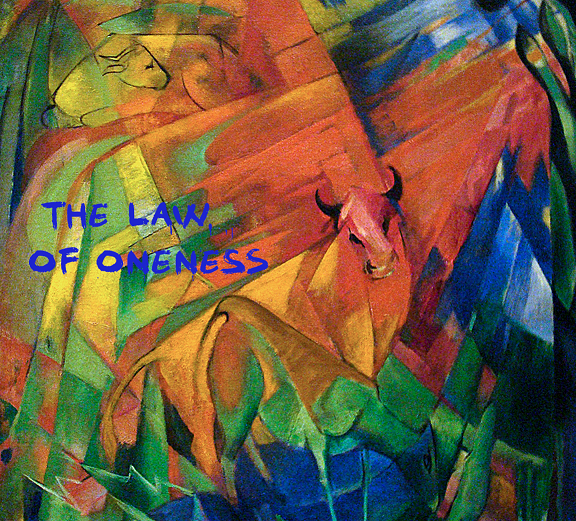
- The Law of Divine Oneness: Everything in the universe is interconnected and part of a unified whole.
The Law of Divine Oneness is a principle that suggests that everything in the universe is interconnected and part of a unified whole. It recognizes that there is a fundamental unity and underlying essence that permeates all of existence. Here are some key aspects associated with the Law of Divine Oneness:
- Interconnectedness: The law emphasizes that all things, whether living or non-living, are connected at a deep level. It suggests that there is no separation between individuals, nature, or the cosmos. Instead, there is a web of interdependence and mutual influence.
- Unity Consciousness: The Law of Divine Oneness encourages a perspective of unity consciousness, which means recognizing that we are all part of the same fabric of existence. It promotes a sense of interconnectedness, empathy, and compassion for all beings.
- Collective Consciousness: The law suggests that individual consciousness is linked to the collective consciousness of humanity and beyond. Our thoughts, beliefs, and actions have the potential to impact the collective consciousness, shaping our shared experiences and reality.
- Spiritual Implications: The Law of Divine Oneness often has spiritual implications, suggesting that there is a transcendent, divine essence that underlies and unifies all aspects of existence. It can be associated with concepts such as universal consciousness, God, Source, or higher power.
- Environmental and Ethical Considerations: Recognizing the interconnectedness of all things can inspire a sense of responsibility and stewardship towards the environment and all living beings. It can lead to a greater awareness of the impact of our actions on the well-being of the whole and promote sustainable and compassionate practices.
- Quantum Physics and Mystical Traditions: The concept of oneness finds resonance with certain aspects of quantum physics, such as the entanglement of particles and the interconnected nature of reality. It also aligns with mystical traditions and spiritual philosophies from various cultures that emphasize the underlying unity of existence.
The Law of Divine Oneness encourages a shift in perspective from separation to unity, promoting a sense of interconnectedness, empathy, and responsibility towards the well-being of all. It invites individuals to recognize and embrace their inherent connection to the greater whole, fostering a deeper understanding of our place in the universe.
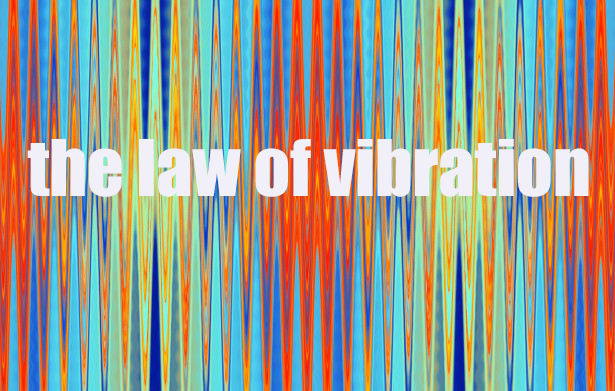
- The Law of Vibration: Everything in the universe is in a state of constant motion and vibrates at a specific frequency.
The Law of Vibration is a principle that states that everything in the universe is in a state of constant motion and vibrates at a specific frequency. This law suggests that at the core of all matter and energy, including thoughts and emotions, there is a vibrational essence. Here are some key aspects associated with the Law of Vibration:
- Everything is Energy: The law recognizes that all things, whether tangible or intangible, are composed of energy. Energy manifests in various forms, from physical matter to thoughts, emotions, and even subtle energetic vibrations.
- Vibrational Frequencies: The law asserts that everything has its own unique vibrational frequency. Every object, person, and thought emits a specific energy signature. This concept is similar to how sound waves vibrate at different frequencies to produce different pitches.
- Like Attracts Like: The Law of Vibration is often connected to the Law of Attraction. It suggests that similar frequencies attract each other. This means that the thoughts, emotions, and energy we emit are likely to resonate with and attract similar frequencies or experiences into our lives.
- Consciousness and Intention: The law acknowledges that our thoughts, emotions, and intentions have vibrational frequencies. It implies that our consciousness and the energy we project influence our experiences and interactions with the world around us.
- Emotional States: The law highlights the importance of emotional states and their impact on our vibrational frequency. Positive emotions such as love, joy, and gratitude are associated with higher vibrational frequencies, while negative emotions such as fear, anger, and sadness are associated with lower frequencies.
- Mind-Body Connection: The law suggests that there is an interplay between our thoughts, emotions, and physical well-being. It proposes that maintaining a positive and harmonious vibrational state can contribute to overall health and well-being.
- Energetic Resonance: The law implies that when our individual vibrations align with the vibrations of what we desire or seek, there is a resonance that enhances the manifestation of those desires. It suggests that aligning our energy with our intentions can facilitate the realization of our goals and aspirations.
The Law of Vibration emphasizes the dynamic nature of the universe and the interconnectedness between energy and consciousness. It invites individuals to become aware of their energetic state, thoughts, and emotions, recognizing that their vibrational frequency can influence their experiences and the reality they attract into their lives.
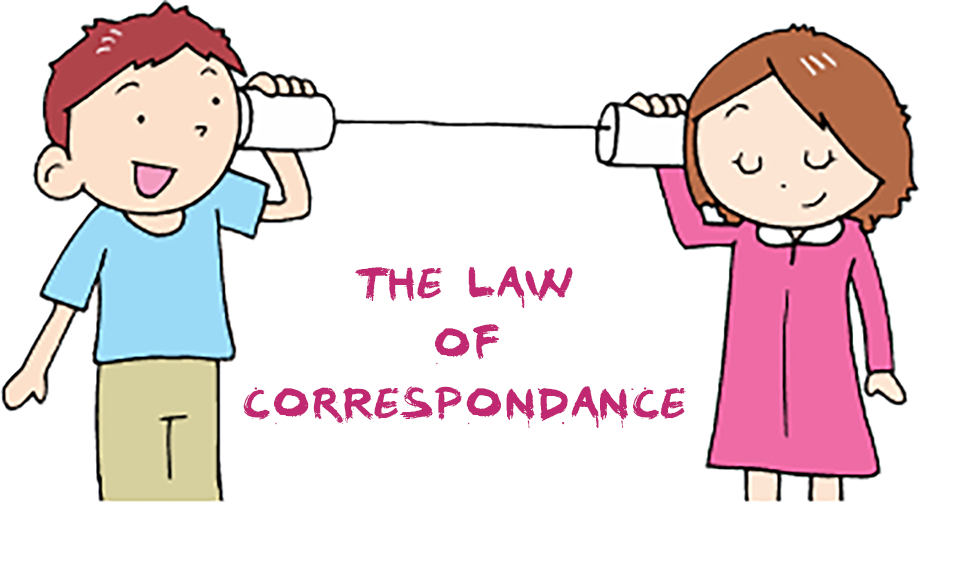
- The Law of Correspondence: As above, so below. The patterns and processes observed in the universe are reflected on all scales, from the macrocosm to the microcosm.
The Law of Correspondence is a principle that suggests that the patterns and processes observed in the universe are reflected on all scales, from the macrocosm to the microcosm. It is closely related to the concept of “as above, so below.” Here are some key aspects associated with the Law of Correspondence:
- Macrocosm and Microcosm: The law proposes that the same fundamental principles and patterns that operate on a grand scale in the universe can be found mirrored in smaller scales and individual aspects of life. It suggests that the structure and dynamics of the cosmos can be seen reflected in the structure and dynamics of individual beings and systems.
- Fractal Nature of Reality: The law aligns with the idea that reality exhibits a fractal nature, where patterns repeat and self-similarity exists across different levels of existence. Just as a small fractal pattern resembles the larger whole, the law suggests that aspects of our lives and experiences reflect the broader universal order.
- Mental and Physical Correspondence: The law extends beyond physical phenomena and also applies to mental and psychological realms. It implies that our thoughts, beliefs, and emotions correspond to the external circumstances and events in our lives. It suggests that there is a connection between our inner world and the outer world we perceive.
- Symbolism and Analogy: The Law of Correspondence recognizes that symbols and analogies can be used to understand and interpret the nature of reality. By recognizing patterns and relationships between seemingly unrelated phenomena, we can gain insights into the deeper workings of the universe and ourselves.
- Spiritual and Philosophical Traditions: The concept of correspondence has been present in various spiritual and philosophical traditions throughout history. For example, in Hermeticism, it is one of the seven principles of the Kybalion, a philosophical text attributed to Hermes Trismegistus.
By understanding the Law of Correspondence, individuals can seek to recognize the connections and parallels between different aspects of existence. It invites us to explore the interrelatedness of phenomena, both within ourselves and in the world around us, allowing for a deeper understanding of the underlying unity and patterns that shape our experiences.

- The Law of Attraction: Like attracts like. Our thoughts, emotions, and beliefs shape our reality and attract experiences that resonate with them.
The Law of Attraction is a principle that suggests that our thoughts, emotions, and beliefs shape our reality and attract experiences and circumstances that resonate with them. It is based on the idea that like attracts like. Here are some key aspects associated with the Law of Attraction:
- Thoughts and Energy: The law posits that our thoughts and emotions emit vibrational energy that interacts with the energetic fabric of the universe. Positive and negative thoughts and emotions carry different frequencies, and the energy we radiate attracts corresponding experiences into our lives.
- Focus and Intention: The law emphasizes the importance of consciously directing our thoughts and intentions toward what we desire rather than what we fear or lack. By focusing on positive outcomes and aligning our intentions with our goals, we can attract those experiences and opportunities into our reality.
- Beliefs and Conditioning: The law recognizes that our deep-seated beliefs, often shaped by our upbringing and past experiences, can influence our thoughts and emotions. Limiting beliefs or negative conditioning can act as barriers to manifesting what we desire. It encourages identifying and transforming such beliefs to align with our desired outcomes.
- Visualization and Affirmations: The law suggests that visualization and affirmations can be powerful tools for manifesting our desires. By vividly imagining and emotionally connecting with the desired outcome, we enhance the vibrational resonance and attract it into our experience.
- Gratitude and Positive Emotions: The law emphasizes the importance of cultivating positive emotions such as gratitude, joy, and love. These emotions raise our vibrational frequency and create a magnetic field that attracts more positive experiences and abundance into our lives.
- Action and Alignment: The law does not solely rely on wishful thinking. It emphasizes the importance of taking inspired action and aligning our actions with our desires. By actively moving towards our goals, we signal our readiness to receive and create opportunities for manifestation.
- Responsibility and Ownership: The law encourages individuals to take responsibility for their thoughts, emotions, and actions, recognizing that they play a significant role in creating their reality. It empowers individuals to become conscious co-creators of their lives.
The Law of Attraction has gained popularity through books like “The Secret” by Rhonda Byrne and has been associated with various spiritual and self-help teachings. It suggests that by consciously directing our thoughts and emotions, we can shape our reality and attract experiences aligned with our desires and intentions. However, it’s important to note that the law is often debated, and some argue for the need to balance it with practical action, critical thinking, and an understanding of external factors that may influence our experiences.
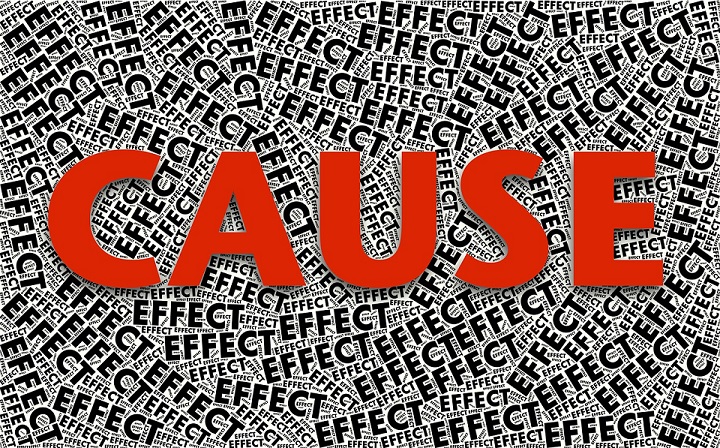
- The Law of Cause and Effect: Every action has a corresponding reaction. Our choices and actions create consequences and shape our experiences.
The Law of Cause and Effect, also known as the Law of Causality, is a fundamental principle that suggests that every action has a corresponding reaction or consequence. It states that for every effect, there must be a cause that precedes it. Here are some key aspects associated with the Law of Cause and Effect:
- Action and Reaction: The law suggests that whenever we take an action, it sets in motion a chain of events that leads to specific outcomes. This chain of cause and effect operates at various levels, from individual actions to larger-scale events.
- Interconnectedness: The law recognizes the interconnected nature of events and phenomena. It suggests that everything in the universe is connected, and no action or event occurs in isolation. Each cause is linked to its corresponding effect, creating a web of interdependence.
- Determinism and Predictability: The law implies that if we understand the causes underlying a particular effect, we can predict or anticipate the outcomes. It suggests that the universe operates in a predictable and orderly manner, governed by cause and effect relationships.
- Responsibility and Accountability: The law encourages individuals to recognize their role in creating the causes that lead to specific effects. It emphasizes personal responsibility and accountability for one’s actions and the awareness of their potential consequences.
- Complex Interactions: The law acknowledges that cause and effect relationships can be complex and multifaceted. It recognizes that multiple causes can contribute to a single effect, and a single cause can have multiple effects. Understanding these complexities can provide insights into the intricacies of events and phenomena.
- Time and Sequence: The law asserts that causes always precede their corresponding effects in the temporal order. The cause occurs before the effect, creating a sequential relationship.
The Law of Cause and Effect is a foundational principle found in various disciplines, including philosophy, science, and spirituality. It helps us understand the connections between actions and outcomes, the predictability of events, and the importance of taking responsibility for our choices and actions. It highlights the interconnectedness and interdependence of all things, suggesting that our actions have consequences that ripple through the fabric of existence.
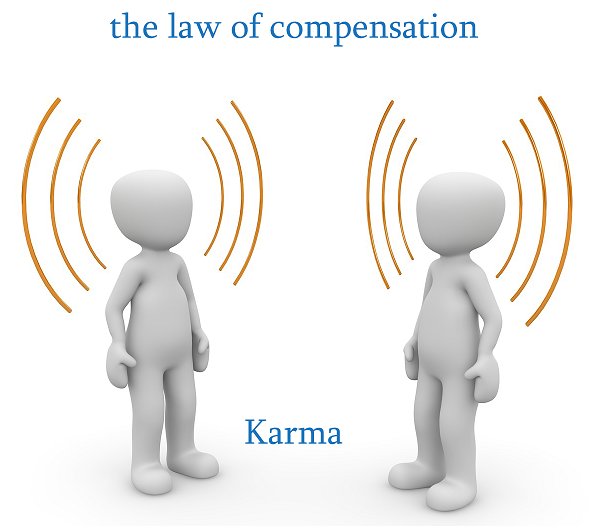
- The Law of Compensation: The universe ensures balance and fairness by compensating for our actions. We receive what we give, whether in the form of energy, experiences, or resources.
The Law of Compensation, also known as the Law of Cause and Effect, is a principle that suggests that the universe ensures balance and fairness by compensating for our actions. It asserts that we receive what we give, and the consequences of our actions come back to us in some form or another. Here are some key aspects associated with the Law of Compensation:
- Action and Consequence: The law recognizes that every action we take has consequences, whether positive or negative. It suggests that our thoughts, choices, and behaviours create a ripple effect that influences our experiences and interactions with the world.
- Reciprocity: The law operates on the principle of reciprocity. It suggests that what we put out into the world, whether in terms of energy, actions, or intentions, comes back to us in some way. Acts of kindness and generosity tend to attract similar experiences, while negative actions may lead to challenging circumstances.
- Balance and Fairness: The law implies that the universe seeks balance and fairness. It suggests that over time, our actions will be compensated, either through positive rewards or the lessons and challenges that arise as a result of our choices. It reminds us that we are accountable for our actions and that there are consequences for both our positive and negative behaviors.
- Karma: The concept of karma is closely related to the Law of Compensation. Karma suggests that our actions create an energetic imprint that influences our future experiences. Positive actions generate positive karma, leading to positive outcomes, while negative actions generate negative karma, resulting in challenging circumstances.
- Learning and Growth: The law recognizes that the consequences of our actions, whether perceived as positive or negative, provide opportunities for learning and personal growth. It suggests that challenges and difficulties can be valuable lessons that help us evolve and develop as individuals.
- Awareness and Responsibility: The law encourages individuals to become aware of the choices they make and the impact of those choices on themselves and others. It emphasizes personal responsibility for our actions and reminds us to consider the potential consequences before engaging in thought, speech, or behavior.
The Law of Compensation serves as a reminder that our actions have consequences and that the universe operates in a way that seeks balance and fairness. It encourages us to be mindful of our intentions and behaviours, recognizing that we have the power to shape our experiences through the choices we make.

- The Law of Perpetual Transmutation of Energy: Energy is constantly flowing and can be transformed from one form to another. We have the power to change and redirect energy through our thoughts and intentions.
The Law of Transmutation of Energy is a principle that states that energy can be transformed from one form to another. It suggests that we have the power to change and redirect the energy within us and around us. Here are some key aspects associated with the Law of Transmutation of Energy:
- Energy is Malleable: The law recognizes that energy is not fixed or static but can be moulded and transformed. It suggests that we can change the nature, quality, and direction of energy through our thoughts, emotions, and actions.
- Conscious Awareness: The law emphasizes the importance of conscious awareness of our energy and its potential for transformation. By becoming aware of our thoughts, emotions, and energetic states, we can consciously choose to transmute negative or lower vibrational energies into positive or higher vibrational energies.
- Mindset and Beliefs: The law suggests that our mindset and beliefs play a significant role in energy transmutation. By shifting our perspective, adopting positive beliefs, and cultivating empowering thoughts, we can transform and elevate the energy within us.
- Emotional Alchemy: The law recognizes that emotions carry energy and can be transmuted. By acknowledging and accepting our emotions, we can consciously choose to transform negative emotions into more positive and constructive states. This process is often referred to as emotional alchemy.
- Energy Practices: The law encourages the use of various energy practices to facilitate the transmutation of energy. These practices may include meditation, breathwork, visualization, affirmations, energy healing techniques, and other modalities that help us connect with and consciously work with our energy.
- Transmuting External Energies: The law suggests that we can also transmute the energy around us. By consciously choosing our environment, relationships, and interactions, we can influence and transform the energetic dynamics of our external experiences.
The Law of Transmutation of Energy highlights our ability to consciously work with energy and transform it for our highest good. It emphasizes the power of our thoughts, emotions, and actions in shaping our energetic experiences. By harnessing this law, we can redirect and transmute energy to create positive change within ourselves and in our lives.
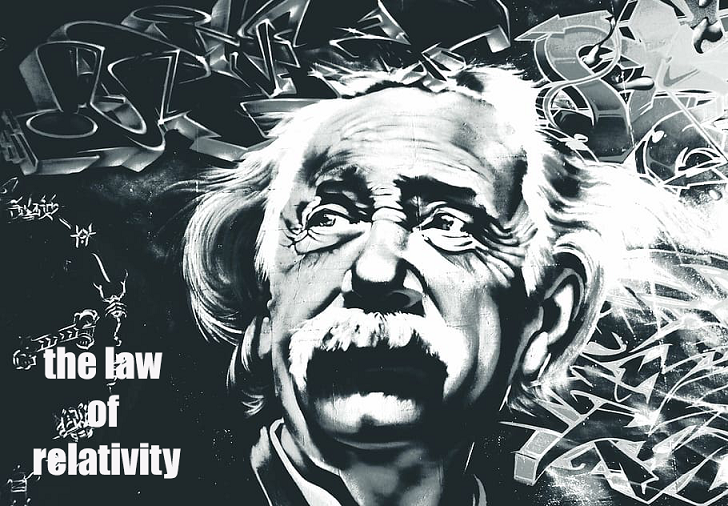
- The Law of Relativity: Everything is relative. We can only experience and understand something by comparing it to something else. Challenges and difficulties are subjective and can be seen as opportunities for growth.
The Law of Relativity, also known as the Law of Perspective, is a principle that suggests that everything is relative and can only be understood in relation to other things. It emphasizes that our perception of events, situations, and experiences is subjective and depends on our point of reference. Here are some key aspects associated with the Law of Relativity:
- Subjectivity of Perception: The law acknowledges that our perception of reality is subjective and influenced by our personal experiences, beliefs, and emotions. It suggests that there is no absolute truth or reality, but rather multiple perspectives that can vary from person to person.
- Comparison and Contrast: The law highlights the importance of comparison and contrast in shaping our perception. It suggests that we understand and define things in relation to their opposite or in comparison to other similar or contrasting experiences. For example, we can perceive something as big only when we have something small to compare it with.
- Contextual Influence: The law recognizes that the meaning and significance of events and experiences are influenced by the context in which they occur. The same event can be perceived differently depending on the circumstances, cultural background, or personal beliefs of the individuals involved.
- Empathy and Understanding: The law encourages empathy and understanding by recognizing that everyone has their own unique perspective and experiences. It reminds us to consider others’ viewpoints and be open to different interpretations and understandings of reality.
- Shifting Perspectives: The law suggests that we have the power to change our perspective and see things from different angles. By consciously shifting our viewpoint, we can gain new insights, broaden our understanding, and develop a more comprehensive picture of reality.
- Gratitude and Perspective Shift: The law highlights the role of gratitude in shifting our perspective. By cultivating gratitude, we can focus on the positive aspects of our experiences and reframe challenging situations, allowing us to perceive them in a more empowering and constructive light.
The Law of Relativity invites us to recognize the subjective nature of our perceptions and the importance of considering multiple viewpoints. It reminds us that our experiences are not absolute or fixed but are influenced by our own filters and the context in which they occur. By embracing this law, we can develop a greater understanding, empathy, and appreciation for the diversity of perspectives and experiences in the world.
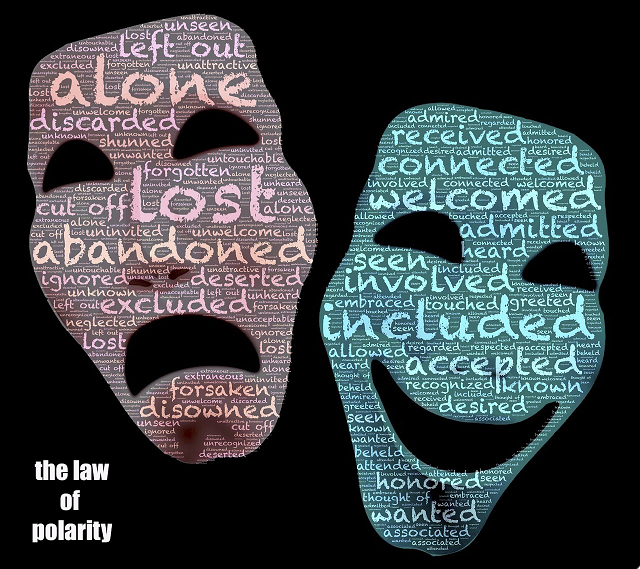
- The Law of Polarity: Everything has its opposite. Opposing forces or dualities coexist and are necessary for balance and understanding. We can only appreciate light because of darkness, and vice versa.
The Law of Polarity, also known as the Law of Opposites, is a principle that suggests that everything in the universe has two polar aspects or poles. It states that opposites are necessary for existence, and they define and complement each other. Here are some key aspects associated with the Law of Polarity:
- Dualistic Nature: The law recognizes the dualistic nature of the universe, where contrasting elements or forces coexist. Examples of polarities include light and dark, hot and cold, positive and negative, expansion and contraction, and so on. These opposites are inseparable and essential for the functioning and balance of the universe.
- Complementary Nature: The law suggests that the two polar aspects of a duality are interdependent and complementary. One cannot exist without the other, and they give meaning and context to each other. For example, without darkness, we cannot fully understand and appreciate light.
- Spectrum of Possibilities: The law implies that between any two polar extremes, there exists a spectrum of possibilities and gradations. For instance, temperature ranges from extremely hot to extremely cold, with various degrees of warmth or coolness in between.
- Transmutation and Balance: The law recognizes that energy can be transmuted from one pole to its opposite. By consciously working with the law, we can shift our energy and move along the spectrum of a polarity to find balance and harmony. For example, we can transform fear into courage or shift from negative thinking to positive thinking.
- Growth and Learning: The law suggests that challenges and contrasts are opportunities for growth and learning. By experiencing and understanding one pole, we can develop a deeper appreciation and understanding of its opposite. Difficulties can be seen as catalysts for personal development and the expansion of consciousness.
- Perception and Perspective: The law emphasizes that our perception and perspective determine how we experience and interpret polarities. What may be seen as negative or positive can vary from person to person based on their beliefs, conditioning, and worldview. The law encourages us to adopt broader perspectives and consider multiple viewpoints to gain a more comprehensive understanding.
The Law of Polarity reminds us that opposites exist in everything and that they play a vital role in the functioning of the universe. By embracing and understanding the interplay of polarities, we can seek balance, growth, and a deeper appreciation for the diversity and complexity of life.
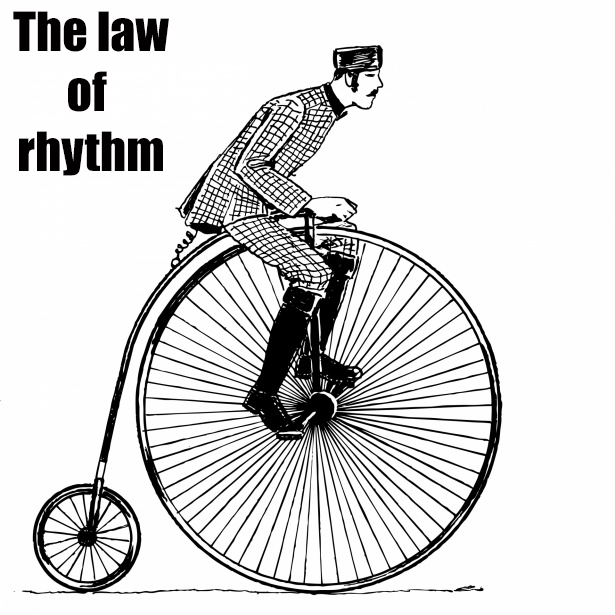
- The Law of Rhythm: Everything has a natural cycle and rhythm. Life unfolds in patterns of ebb and flow, expansion and contraction. Understanding and aligning with these rhythms can lead to greater harmony.
The Law of Rhythm, also known as the Law of Cycles, is a principle that suggests that everything in the universe operates in a rhythmic and cyclical manner. It emphasizes that life is characterized by patterns, fluctuations, and cycles that repeat and unfold in a regular and predictable way. Here are some key aspects associated with the Law of Rhythm:
- Cyclic Nature: The law recognizes that all aspects of life, including nature, seasons, human behaviour, and emotions, follow rhythmic patterns and cycles. These cycles can be daily, monthly, seasonal, or even longer-term cycles. Examples include the rising and setting of the sun, the phases of the moon, the ebb and flow of tides, and the cycles of birth, growth, decay, and regeneration in nature.
- Ups and Downs: The law suggests that life is characterized by ups and downs, highs and lows, and periods of expansion and contraction. Just as waves have peaks and troughs, our experiences also have moments of success and joy, as well as challenges and setbacks. These fluctuations are inherent in the rhythm of life.
- Flow and Change: The law implies that everything is in a constant state of change, and nothing remains stagnant. It recognizes that the rhythm of life involves continuous movement, evolution, and transformation. Understanding this law can help us navigate change and adapt to the inevitable shifts in our lives.
- Lessons and Growth: The law suggests that within the cycles and rhythms of life, there are opportunities for learning, growth, and self-discovery. The challenges and difficulties we encounter are part of the rhythm and can provide valuable lessons and insights that contribute to our personal development.
- Awareness and Alignment: The law encourages us to be aware of the rhythms and cycles in our lives and to align ourselves with them. By recognizing the natural flow and timing of events, we can make better choices, take advantage of favourable conditions, and navigate challenges with greater ease and resilience.
- Acceptance and Balance: The law reminds us to accept and embrace the rhythm of life, including its ups and downs. It encourages us to find balance and harmony by embracing both the active and passive phases, the expansion and contraction, and the various aspects of the cycle.
The Law of Rhythm invites us to recognize and honour the inherent rhythms and cycles in our lives and in the world around us. By understanding and flowing with these rhythms, we can cultivate resilience, adaptability, and a deeper sense of harmony with the natural order of life.

- The Law of Gender: Everything has masculine and feminine principles. These principles are not limited to gender but represent complementary aspects that exist in all creation.
The Law of Gender, also known as the Law of Polarity or the Law of Gender and Creation, is a principle that suggests that everything in the universe has masculine and feminine qualities or energies. It emphasizes the duality and complementary nature of these energies in the process of creation and manifestation. Here are some key aspects associated with the Law of Gender:
- Masculine and Feminine Energies: The law recognizes that masculine and feminine energies exist within all individuals, regardless of gender. Masculine energy is associated with qualities such as strength, action, logic, and assertiveness, while feminine energy is associated with qualities such as receptivity, intuition, nurturing, and creativity. Both energies are necessary for balance and wholeness.
- Creative Power: The law suggests that the interplay of masculine and feminine energies is fundamental to the creative process. It symbolizes the union of the active and receptive forces that give rise to new life, ideas, and manifestations. This creative power can be seen in various aspects of life, including procreation, artistic expression, problem-solving, and personal growth.
- Balance and Harmony: The law emphasizes the importance of balancing and harmonizing the masculine and feminine energies within ourselves. It suggests that cultivating a balance between action and receptivity, logic and intuition, strength and gentleness, leads to greater harmony, effectiveness, and fulfilment in our lives.
- Co-creation and Collaboration: The law highlights the idea that when masculine and feminine energies come together in harmony, there is a potent force for co-creation and collaboration. By honouring and respecting each other’s unique qualities and contributions, individuals can harness the power of synergy and create more expansive and holistic outcomes.
- Inner and Outer Reflection: The law suggests that the balance of masculine and feminine energies within ourselves is reflected in the external world. It proposes that our external experiences and relationships mirror our inner state and the harmony or imbalance of our masculine and feminine energies.
- Integration and Wholeness: The law encourages the integration and unification of masculine and feminine energies within individuals. It invites us to embrace and honour all aspects of ourselves, both the active and passive, the logical and intuitive, to achieve a sense of wholeness and alignment.
The Law of Gender highlights the significance of the interplay between masculine and feminine energies in creation, manifestation, and personal growth. By embracing and balancing these energies within ourselves, we can tap into our creative power, enhance our relationships, and experience a greater sense of harmony and wholeness in our lives.

- The Law of Divine Order: The universe operates according to a divine order and intelligence. Even if things appear chaotic or random, there is an underlying organization and purpose.
The Law of Divine Order is a principle that suggests that there is an inherent order and organization in the universe. It emphasizes that everything is interconnected and unfolds according to a higher divine plan or intelligence. Here are some key aspects associated with the Law of Divine Order:
- Harmony and Balance: The law recognizes that the universe operates in a state of harmony and balance. It suggests that there is a natural order to everything, and when things are aligned with this order, they flow smoothly and effortlessly. It reminds us that chaos and disorder can be transformed into harmony and balance through alignment with the divine order.
- Trust in the Greater Plan: The law invites us to have trust and faith in the greater plan of the universe. It suggests that even when things may appear chaotic or uncertain, there is an underlying divine order at work. It encourages us to surrender to this order and trust that everything is unfolding as it should, even if we cannot fully comprehend it in the present moment.
- Synchronicity and Divine Timing: The law highlights the occurrence of synchronicities and the importance of divine timing. It suggests that events and experiences align perfectly in accordance with the divine order. When we are attuned to the flow of the universe, we can recognize and follow the signs and guidance that lead us to the right people, opportunities, and circumstances.
- Personal Alignment: The law emphasizes the significance of aligning our thoughts, emotions, actions, and intentions with the divine order. It suggests that when we are in alignment with our higher selves and the universal principles, we experience a sense of ease, clarity, and fulfilment. By following our inner guidance and intuition, we can navigate life in alignment with the divine order.
- Acceptance and Surrender: The law encourages acceptance and surrender to the divine order, even when it may not align with our personal desires or expectations. It reminds us that there is a larger perspective at play and that what may initially appear as a challenge or setback could be part of a greater plan for our growth and evolution.
- Interconnectedness: The law highlights the interconnectedness of all things. It suggests that every being, event, and circumstance has a purpose and place within the grand tapestry of existence. It encourages us to recognize and honour the interconnectedness of all life forms and to act in ways that promote harmony, respect, and love for all.
The Law of Divine Order reminds us of the inherent order and intelligence that governs the universe. By aligning ourselves with this divine order, we can experience a greater sense of peace, flow, and fulfilment in our lives. It invites us to trust in the unfolding of events and surrender to the wisdom an guidance of the divine plan.

